

XSPC Razor 3870 GPU Block Flow Testing
Introduction
Welcome to my pressure drop testing of the XSPC Razor 3870 block for a wide range of chipsets. This page will focus on the pressure drop and flow characteristics only for this water block only. First I would like to give special thanks to Paul from XSPC for providing me with a sample to test, I have yet to try and XSPC product that didn't impress me. Being the engineer that I am, I tend to take notice of the small tweaks here and there that make a product perform well, and XSPC obviously spends a lot of time working on improving their own designs and it shows.
Block Characteristics
The block is a finely CNC machined block. Unlike other GPU full coverage blocks, this one is machined from a solid piece of copper ensuring the best heat transfer to all parts of the block. The top is a blue tinted acrylic top which include two pre-drilled locations for LEDs. The block comes very well packaged with one LED to get you started and all of your standard hardware for installation.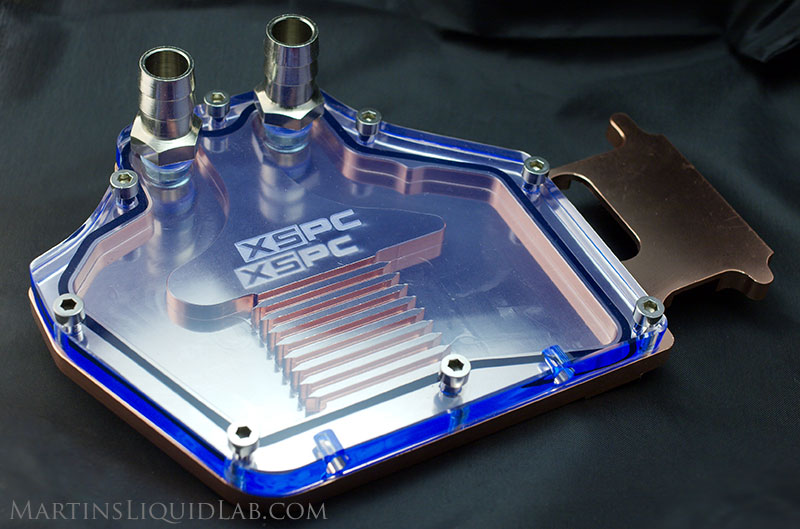
The next thing you'll notices is the attention to detail here where XSPC has actually sharpened the inlet and outlet fins to minimize energy losses at the fins. This small attention to detail is likely contributing to it's low pressure drop. It's very refreshing to see this attention to detail in the actual design.
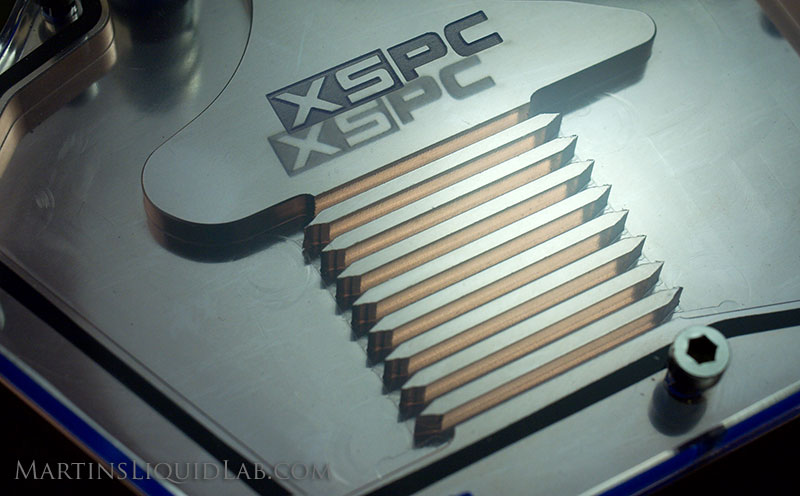
And the back exhibits very nice machining work. As you can see the most critical areas are machined with a very large fly cutter to ensure flatness and all edges are CNC chamfered for that extra fine finish, more attention to detail.
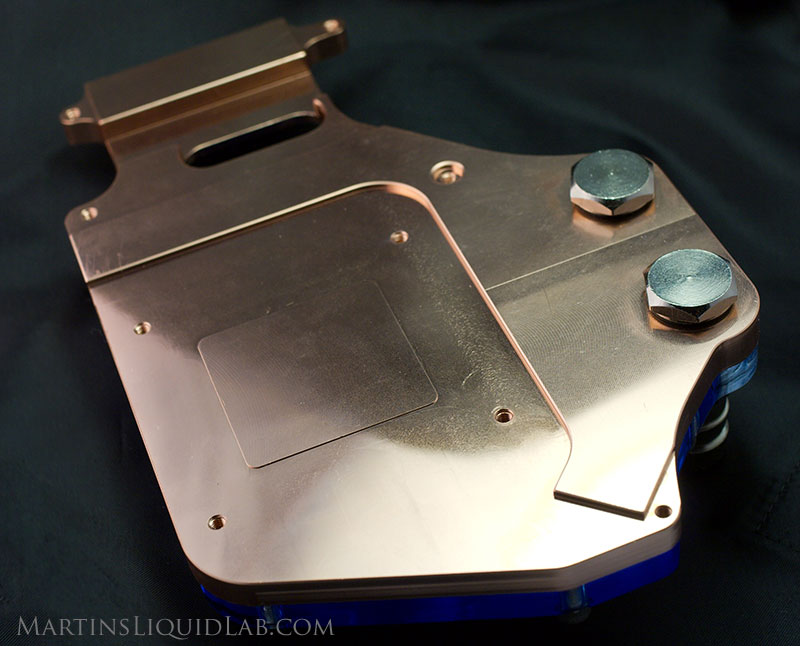
Hydraulics and Pressure Drop Testing
The most scientific way to determine a blocks hydraulic resistance is to test pressure drop. Pressure drop is a measurement of pressure loss across a block that varies with flow rate. This is basically a measurement of energy loss, and directly influences how much flow rate you will have.Equipment:
- Dwyer Digital Manometer 477 Mark IV - Accuracy .5% of Full Scale. Range 0-20.00 PSI range, Resolution .01 PSI
- King Instruments 7520 Series 0-5GPM, 250mm scale - Accuracy 2% of Full Scale. Range 0-5GPM, Resolution .1 GPM (can be interpolated to .02GPM)
- Water Source - Household water pressure - 50PSI at >5GPM - Because flow rate readings are instantaneous, household tap water and water pressure are a good and powerful source for pressure drop testing.

And my results are as follows, the pressure drop is the best I've tested to date for a 3870 GPU block, it appears those "Razor" GPU area fin details do help with this:
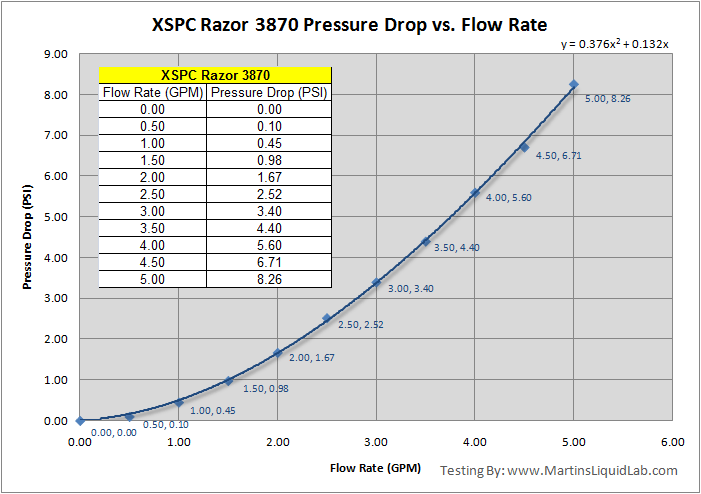
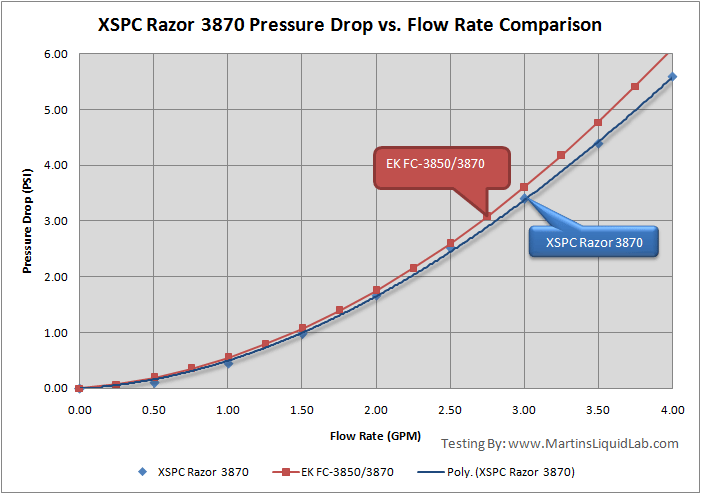
Granted the difference is relatively small to the EK, but it is a lower pressure drop which is likely a result of the Razor fins.
The XSPC Razor 3870 is King of the full coverage 3870 blocks for low pressure drop to date!
Pros
- Solid Copper Base for all components cooled ensures maximum heat transfer
- Very fine machining finish and chamfered edges.
- Razor GPU fin leading and trailing edges minimize entrance/exits losses, improving flow rates.
- LED mounting holes
- 4 ports for flexibility in tubing routing and SLI
Cons
- Dual slot thickness (most are, just something to be aware of)
Bottom Line
I'm really impressed with this full coverage GPU block. Having my own milling machine and having made my own blocks, I must say the machining finish on this block is outstanding and it is very finely crafted. While I won't have a chance to test thermals on it yet, it has characteristics with the solid base, and fin thickness that should put it up near the top performing of full coverage blocks. In additional XSPC and their attention to detail has improved the typical GPU fin area by incorporating their "Razor" leading and trailing edges which reduces pressure drop and will improve flow rates. The quality and design of this block is excellent!Where to buy
XSPC Retailers Link
